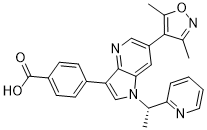It is unclear why the loss of coactivator HATs results in rod chromatin decondensation similar to that seen in the absence of RB, a repressor associated with HDACs, but these findings all point to the importance of homeostasis between histone acetylation and deacetylation in rod nuclear chromatin organization. Furthermore, our recent studies have demonstrated that the specific rod transcription factors CRX, NRL and NR2E3, play important roles in higher order chromatin organizations, such as chromosomal loops, which may contribute to the rod-specific nuclear architecture. A better understanding of how interactions between specific transcription factors and epigenetic modulators regulate rod nuclear organization will provide new insights into general chromatin regulatory mechanisms and how they relate to transcriptional regulation. A liver is considered marginal when obtained from a donor with hemodynamic instability prior to donation and/or aged more than 65 years. Typically the organ also exhibits a high degree of steatosis and particularly, undergoes a cold ischemia time of more than 12�C14 hours before reperfusion. We thus set up a preclinical model of ischemiareperfusion injury using organs with prolonged cold ischemia time to provide potentially useful information for a prompt application to clinical practice where there remains a desperate shortage of available organs. Ischemia reperfusion injury in organ transplantation remains a crucial problem, especially given its association with more frequent problems later in the life following transplant. Organs that undergo significant damage during IRI function less well immediately after reperfusion ; precipitating longer hospital stays, and have more problems in the later phases of rejection. While studied most extensively with respect to organ transplantation, IRI also plagues clinical practices such as heart bypass and vascular surgery, stroke and sepsis. In all these situations there is some degree of ischemia or a hypoxic event followed by reperfusion and reoxygenation during which the majority of the damage occurs. The pathophysiology of IRI is complex. Prominent features include oxidative stress, inflammation with infiltration of neutrophils and monocytes, cell death and ultimately loss of cell and organ function, contributing in the extreme to multi-organ failure. Likely because of the complexity and diversity of pathological processes that comprise IRI, no established effective pharmacological treatment has been discovered. Heme oxygenase-1 and its products are accepted molecules by which to effectively treat IRI based on studies in rodents and large animals. Not only does HO-1 expression lead to removal of heme, a powerful oxidant when present in excess, but the degradation of heme by HO-1 leads to the production of carbon monoxide and biliverdin that have potent anti-oxidant and anti-inflammatory effects leading to overall cytoprotection and restoration  of homeostasis.
of homeostasis.